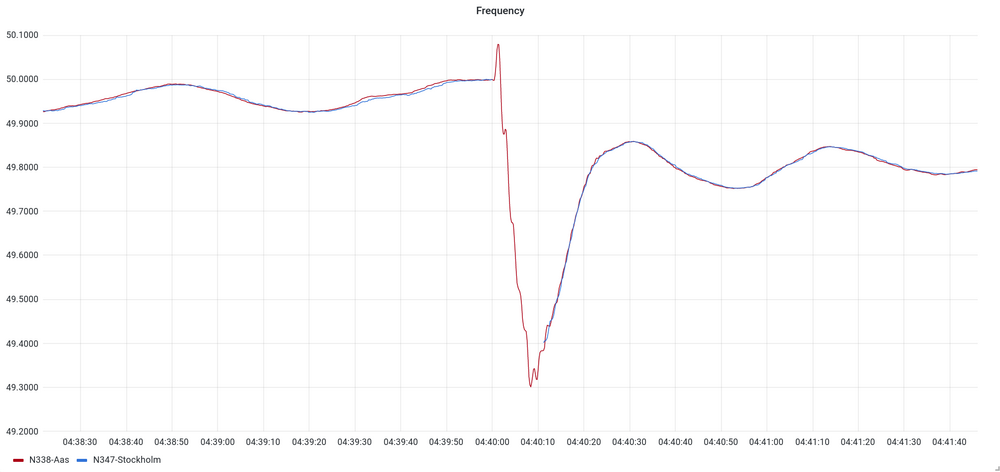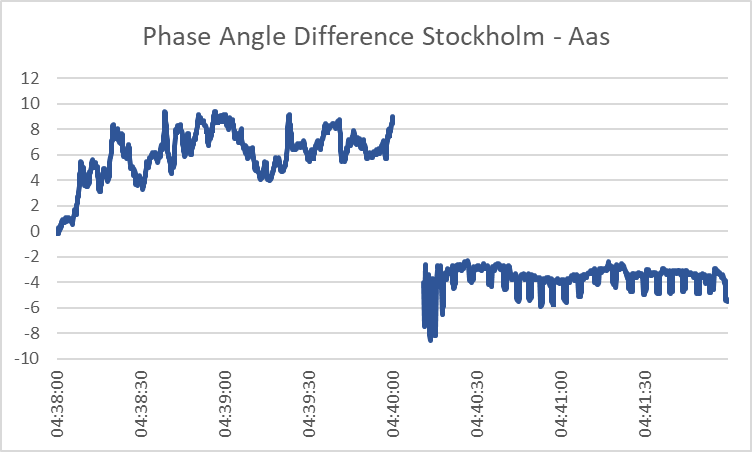Undervoltage and frequency drop in the Nordics
In the morning of April 26, at 04:40 UTC, problems occurred with the power supply in the Scandinavian interconnected system. According to our information, the cause was a three-pole short circuit in a transmission line in the Stockholm area. Not only did the power fail in the Stockholm region, but the grid frequency in the entire grid area dropped temporarily to 49.3 Hz! As a result, the Forsmark 1 and 2 NPPs were taken off the grid by a reactor emergency shutdown.
 Figure 1: Frequency
Figure 1: Frequency
Figure 1 shows that in the bidding zone of Oslo in Norway the grid frequency in Aas rises briefly at 04:40 UTC and then drops to 49.3 Hz. Our measuring station in Stockholm had already gone offline at this moment due to undervoltage and resumed its recordings 11 seconds later. Most likely, the sharp spike was caused by the loss of the transmission line (resulting in a corresponding drop in load). Since the affected network segment was then undersupplied, also as a result of the two emergency shutdowns, the network frequency dropped to 49.3 Hz.
 Figure 2: Phase angle difference Stockholm – Aas
Figure 2: Phase angle difference Stockholm – Aas
Figure 2 shows the phase angle difference Stockholm to Aas at the time of the event. When this is positive, the net generation in the Stockholm region is greater than in the region around Aas. Therefore, before the frequency dropped, there was a load flow from the Stockholm region to the region around Aas. This can be explained by the fact that before the frequency drop, the two units of the Forsmark NPP were producing. The rapid shutdown as a result of the loss of the transmission line has led to a massive undersupply of the Stockholm region. Moreover, the repeated jumps in the normalized phase angle difference after 04:40 show the instability in the Stockholm region as a result of the missing flywheels mass. The number of jumps decreases until about 04:50 and then comes back to a normal level.
